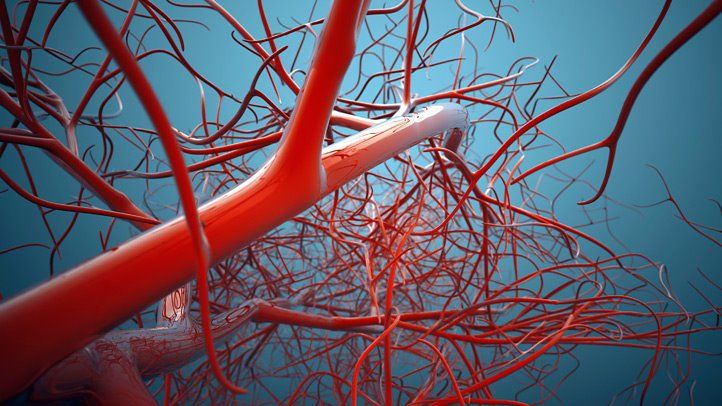- Empty cart.
- Continue Shopping
Understanding the Different Types of Blood Vessels

The vascular system, often referred to as the circulatory system, is a complex network of blood vessels that transport blood throughout the body. Understanding the different types of blood vessels is crucial for grasping how this intricate system functions.
The Three Main Types of Blood Vessels
Arteries
Arteries are responsible for carrying oxygen-rich blood away from the heart to the rest of the body. They are generally thick-walled, elastic, and high-pressure vessels.
Subtypes of Arteries
- Aorta: The largest artery, originating from the heart, which branches out into smaller arteries.
- Pulmonary Arteries: These carry oxygen-poor blood from the heart to the lungs for oxygenation.
Veins
Veins transport oxygen-depleted blood back to the heart from various parts of the body. They are thinner-walled than arteries and contain valves to prevent backflow of blood.
Subtypes of Veins
- Superficial Veins: These are close to the skin’s surface and are often visible.
- Deep Veins: Located deep within muscle tissues, these veins are usually larger and carry more blood.
Capillaries
Capillaries are the smallest and most numerous of the blood vessels. They serve as the connection between arteries and veins, facilitating the exchange of oxygen, nutrients, and waste materials between blood and tissues.
Functions and Roles
Oxygen and Nutrient Supply
Arteries and capillaries work together to deliver oxygen and essential nutrients to cells throughout the body.
Waste Removal
Veins and capillaries collaborate to remove waste products like carbon dioxide and metabolic byproducts from tissues.
Regulation of Blood Pressure
The elasticity of arteries helps regulate blood pressure, ensuring that blood reaches all parts of the body efficiently.
Temperature Regulation
Blood vessels, particularly capillaries, play a role in regulating body temperature by dilating or constricting to either release or conserve heat.
Health Implications
Cardiovascular Diseases
Issues with blood vessels, such as blockages in arteries or weak vein walls, can lead to cardiovascular diseases like heart attacks or strokes.
Varicose Veins
Faulty valves in veins, particularly in the legs, can lead to varicose veins, which are not only a cosmetic concern but can also cause discomfort.
Hypertension
Narrow or stiff arteries can result in high blood pressure, also known as hypertension, which is a risk factor for various heart-related conditions.
Finally, understanding the different types of blood vessels provides valuable insights into the body’s circulatory system and how it contributes to overall health. Each type of blood vessel has a unique role, and their seamless functioning is crucial for everything from nutrient delivery to temperature regulation.
So, the next time you think about your health, remember that these intricate pathways of vessels are continuously working to keep you in optimal condition. Whether it’s the robust arteries, the diligent veins, or the versatile capillaries, each plays a vital role in keeping you alive and well.








